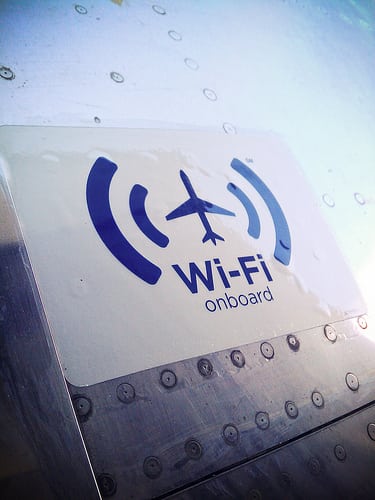Latest News
[Via Satellite 07-22-2014] Honeywell’s latest passenger survey on In-Flight Connectivity (IFC) shows just how much the mindset toward flying connected has changed. Led by Kelton, a market research group, the survey queried 1045 U.S. adults between June 6 and June 19 2014 who used Wi-Fi on planes within the past 12 months. The results showed passengers are increasingly more willing to go out of their way to stay connected.
Two-thirds of fliers said the availability of Wi-Fi influences how they choose to fly. Nearly one in five said they would switch flights if it meant the difference between having Wi-Fi or going without. In fact, 37 percent of participants said they would be upset if they had to fly without Wi-Fi which is more than the 35 percent that would be upset if they had to fly without food or water.
Of course, the satellite industry is reacting to this growing shift from mere preference to demand. Gogo has been steadily equipping planes with its ATG-4 connectivity product, and has plans to bolster its international presence. Panasonic signed as an anchor customer on Eutelsat 172b — a satellite project that has been accelerated to keep pace with demand. And ViaSat too partnered with Eutelsat to allow customers to shift between high throughput coverage areas over North America, Europe and the Mediterranean.
There has also been a notable spike in the number of Air-to-Ground (ATG) plans. While Gogo CEO Michael Small referred to the technology as “the Model-T,” both Inmarsat and AT&T have announced intentions of building large numbers of towers to connect passengers while flying over landmasses (Europe and North America, respectively). Honeywell, the organizer of the survey, is currently providing IFC through Inmarsat.
Based on the results of the survey, Honeywell goes as far as calling IFC a “need,” and while it might be a stretch to add Wi-Fi to Maslow’s hierarchy of needs, passengers are certainly acting like it should. Nearly half of fliers said they would be willing to endure a “travel-related inconvenience” if it meant having Wi-Fi speeds equivalent to being at home. These inconveniences included swapping tickets to a standby plane (29 percent), showing up three hours prior to boarding (34 percent), and even crossing paths with Transportation Security Administration (TSA) personnel twice under their own volition.
Passengers did differ in their willingness to pay for IFC in dollars rather than stress or pain. Only 22 percent of participants said they have paid more for a flight with Wi-Fi than one without. If the service is free, 85 percent of participants said they would use it on most or all flights. Thus, monetizing IFC remains a challenge, despite its popularity. Euroconsult does not expect such services to make enough revenue to become profitable until 2023. Passenger connectivity is expected to be the primary source of revenue, but airlines and connectivity providers are still evaluating methods of payment. In the meantime, studies like Honeywell’s latest survey show that demand for IFC is only going up.
Get the latest Via Satellite news!
Subscribe Now